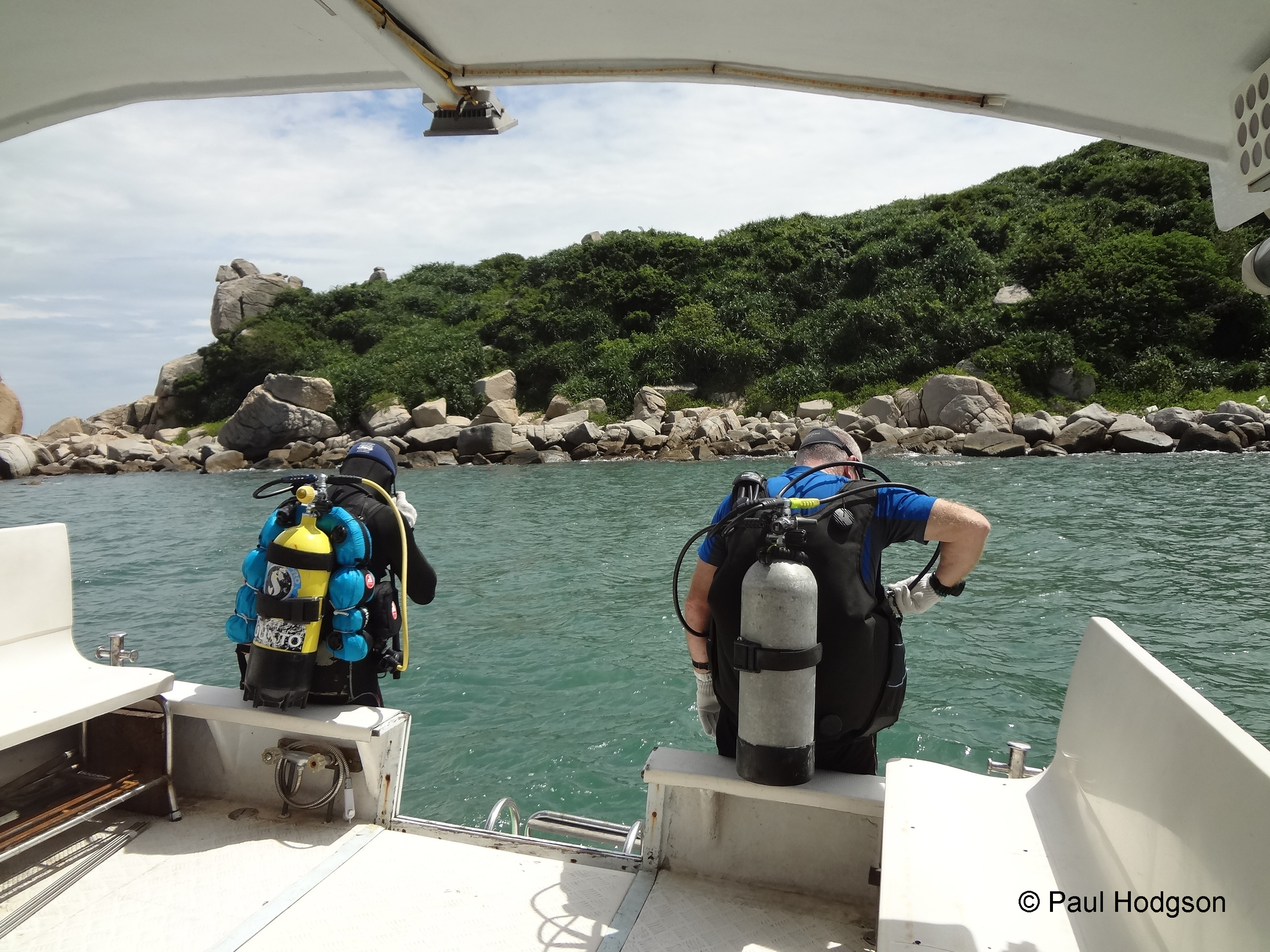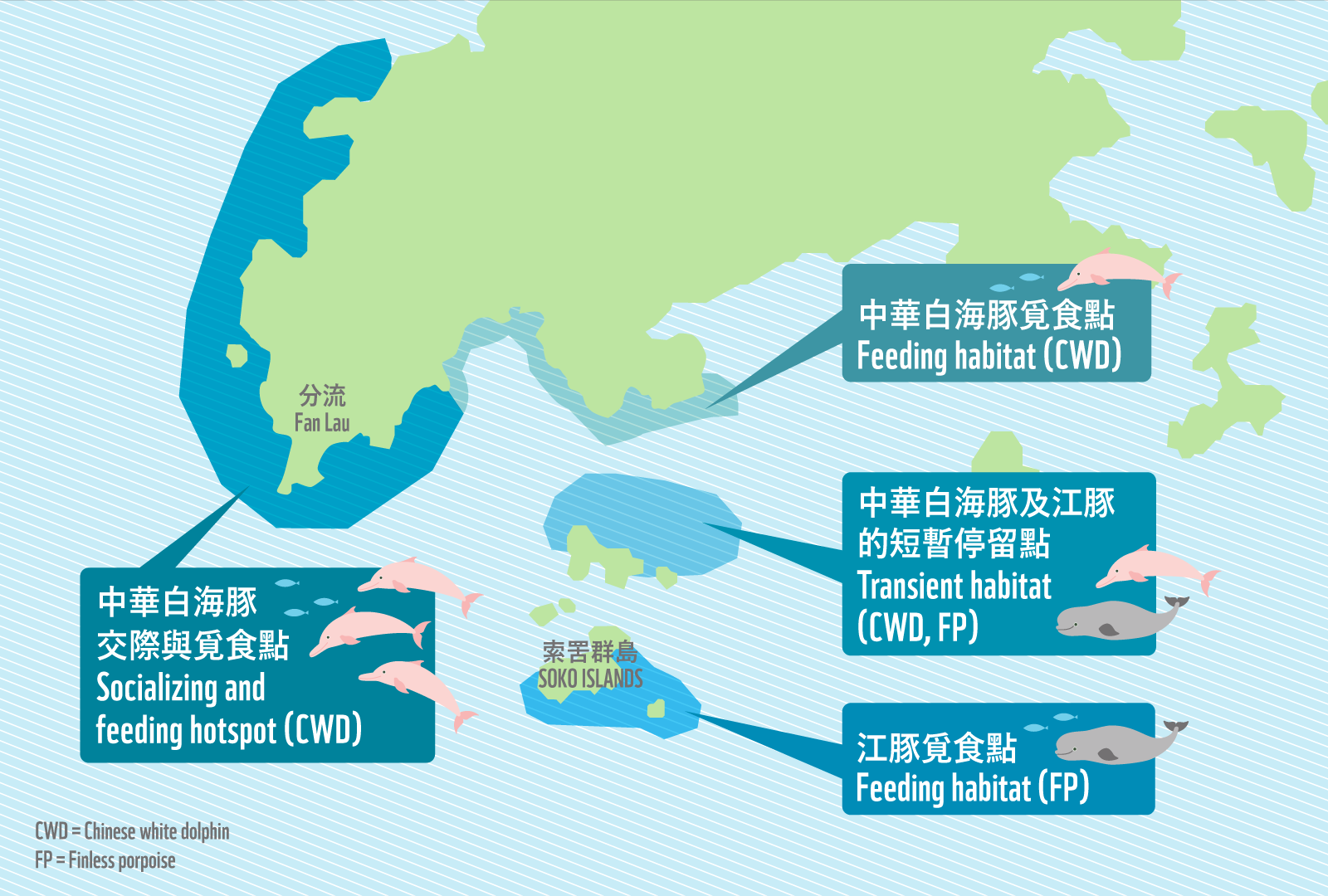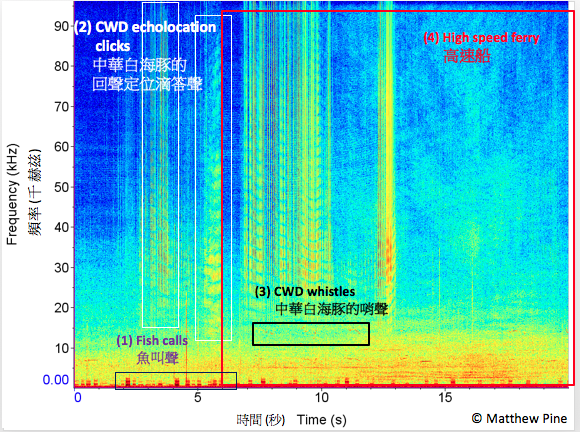

The dangers facing Chinese white dolphin from marine traffic off south and west Lantau and around Sokos were examined by WWF-Hong Kong’s on-going underwater sound study conducted since April 2018. A total of nine underwater sound recorders collected Chinese white dolphin whistles, dolphin and finless porpoise echolocation clicks and feeding buzzes, as well as vessel noise within the study area.
A hydrophone is an underwater microphone connected to a waterproof, rechargeable and portable recorder that can record for two minutes every 10 minutes, for up to 1.5 months. The hydrophones we use are specifically designed to cover a wide frequency range – from the very high frequency clicks of finless porpoise to the very low frequency sound of fish chorus and cargo noise.

The data is downloaded, followed by recharging the device before it is placed underwater again on the stand, ready for the next recording.



Hydrophone data reflect the amount of time cetaceans spend in the area and their behavioral patterns at each deployment location. The acoustic information collected allows us to map potential dolphin foraging and socializing hotspots, as well as significant porpoise foraging habitat (see picture on the right).

Here are some sample data of the hydrophone taken at night. The spectrogram is a sound frequency profile showing all noise signals recorded. Have a listen.

WWF has identified an urgent need to expand the current hydrophone study to also cover piling noise impacts on Chinese white dolphin off the Soko Islands, as the modelling results of our sound propagation study revealed that the piling noise generated from the LNG terminal may spread to the proposed South Lantau Marine Park and damage the hearing ability of marine mammals within. The study will also continue to monitor diel and seasonal patterns of cetacean behavior and cetacean-vessel interactions off south and west Lantau.
This scientific data will be used to formulate strategies to save the Chinese white dolphin, such as by lobbying the government to establish a dolphin conservation management area covering waters off west and south Lantau, implement measures to further mitigate piling noise impacts, divert or restrict vessels traversing key dolphin habitats.